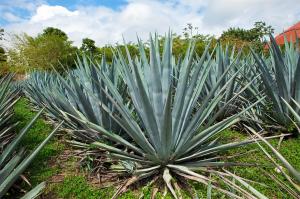What Causes Tomato Plant Leaves to Turn White
Tomatoes are a popular crop in many home gardens and commercial farms. However, they are susceptible to a range of diseases, pests, and environmental stressors that can lead to leaf discoloration. One of the most common problems gardeners face is the whitening of tomato plant leaves. While there could be several factors responsible for this phenomenon, the four most common ones are discussed below:
1. Powdery Mildew
Powdery mildew is a fungal disease that affects a wide range of plants, including tomatoes. It thrives in warm and humid conditions, and the spores can spread rapidly in a garden with poor air circulation or soil drainage. The first sign of powdery mildew is usually the appearance of white or grayish powdery spots on the tomato leaves. If left untreated, the fungus can spread to other parts of the plant, stunting growth and reducing yields. To prevent powdery mildew, gardeners should ensure the tomato plants receive adequate sunlight, proper irrigation, and adequate space between plants for air circulation. Fungicides can also be used as part of an integrated pest management strategy to control the spread of powdery mildew.
2. Sunscald
Another factor that can cause tomato plant leaves to turn white is sunscald. This occurs when the fruit or leaves are exposed to direct sunlight for prolonged periods, causing the plant tissue to become damaged and appear whitish or pale. Sunscald can be avoided by providing adequate shade to the plants during the hottest parts of the day, especially in areas with intense sunlight. Gardeners can also use reflective mulches or other materials to reflect sunlight away from the plants.
3. Nutrient Deficiencies
Tomatoes require a balanced supply of nutrients to grow and remain healthy. A deficiency in essential nutrients such as nitrogen, phosphorus, or magnesium can cause leaf discoloration and other symptoms. In particular, a lack of magnesium can lead to chlorosis, a condition that causes the leaves to turn yellow, then white. To address nutrient deficiencies, gardeners should conduct soil tests to determine what minerals the plants are lacking and adjust the fertilizer accordingly.
4. Whiteflies
Whiteflies are tiny insects that feed on the leaves of tomato plants, causing yellowing and wilting. They also excrete sticky honeydew, which attracts mold and other pests that can turn the leaves white. Gardeners can control whiteflies by using sticky traps or insecticides, or by introducing natural predators such as ladybugs or lacewings into the garden.
In conclusion, white tomato plant leaves can be caused by several factors, including fungal diseases, sunscald, nutrient deficiencies, and pests. By being aware of these causes and taking steps to prevent, identify, and treat them, gardeners can ensure their tomato plants remain healthy and productive.

 how many times do yo...
how many times do yo... how many planted tre...
how many planted tre... how many pine trees ...
how many pine trees ... how many pecan trees...
how many pecan trees... how many plants comp...
how many plants comp... how many plants can ...
how many plants can ... how many plants and ...
how many plants and ... how many pepper plan...
how many pepper plan...































